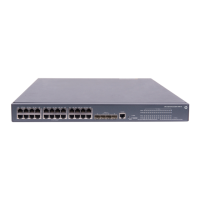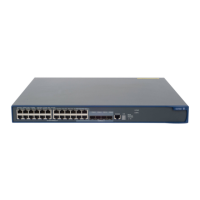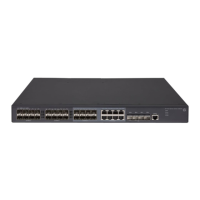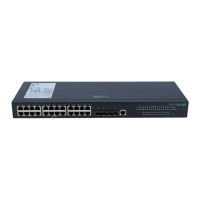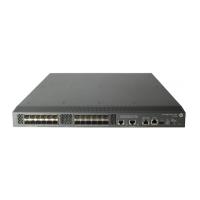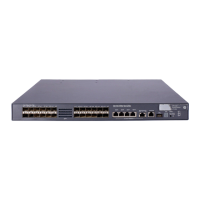98
Figure 30 Smooth upgrading using the TFTP client function
Configuration procedure
1. Configure the PC (TFTP Server), the configuration procedure is omitted.
• On the PC, enable the TFTP server
• Configure a TFTP working directory
2. Configure the IRF virtual device (TFTP Client)
CAUTION:
If the available memory space of the master and slave switches is not enough, use the fixdisk command to
clear the memory or use the delete /unreserved
file
-
url
command to delete the files not in use and then
perform the following operations.
# Download application file newest.bin from PC to the master and slave switches.
• Download application file newest.bin from PC to the root directory of the storage medium on the
master.
<Sysname> tftp 1.2.1.1 get newest.bin
• Download application file newest.bin from PC to the root directory of the storage medium on a
slave switch (with the member ID 2).
<Sysname> tftp 1.2.1.1 get newest.bin slot2#flash:/newest.bin
# Upload a configuration file config.cfg to the TFTP server.
<Sysname> tftp 1.2.1.1 put config.cfg configback.cfg
# Specify newest.bin as the main boot file to be used at the next startup for all the member devices.
<Sysname> boot-loader file newest.bin slot all main
This command will set the boot file of the specified board. Continue? [Y/N]:y
The specified file will be used as the main boot file at the next reboot on slot 1!
The specified file will be used as the main boot file at the next reboot on slot 2!
# Reboot the IRF virtual device and the software is upgraded.
<Sysname> reboot
CAUTION:
The boot file used for the next startup must be saved under the root directory of the storage medium. You
can copy or move a file to the root directory of the storage medium. For more information about the
boot-loader command, see the
Fundamentals Command Reference.
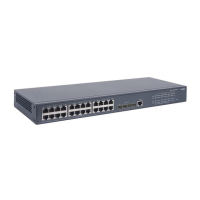
